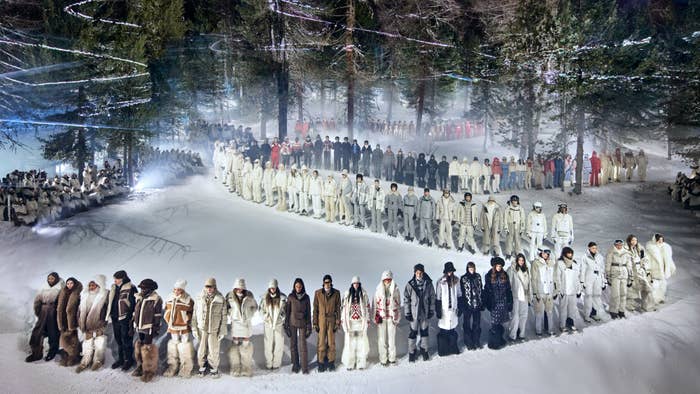
Over the last few years, shiny Moncler puffer jackets have found their way into young New Yorkers’ discerning rotation of aspirational outerwear (they’ve even created a nickname for the jacket, Moncleezy). Making it into this rotation isn’t easy, but once a style is there, it’s there. And the trickle-down effect it has on a brand’s perception and bottom line is impactful. While many luxury conglomerates saw a slowdown in spending last year, Moncler’s revenues rose to 24 percent in the first half of 2023, with current growth being fueled by the Asia-Pacific region.
But this didn’t just happen by accident (or overnight). In 2003, the brand was almost bankrupt and had very little cachet when Remo Ruffini bought it. Founder René Ramillon, who introduced the brand in 1952, set out to make coats that protected workers from cold temperatures at high altitudes. Ruffini embraced the company’s craftsmanship and technical qualities but he wanted to make it an aspirational fashion brand.
“I didn’t think about revenue when I first bought the brand,” said Ruffini. “I cared about building up the brand and brand perception. I knew if I built a strong brand, the customer is going to follow.”

Ruffini initially focused on the Moncler collection and creating the manufacturing facilities in Europe needed to maintain the brand’s design and craftsmanship. Then in 2018, taking a page from streetwear collaborations, he launched Moncler Genius, which brought in talent across different industries to design limited edition products. They’ve partnered with designers like Simone Rocha, Craig Green, and Hiroshi Fujiwara along with talent like Pharrell Williams and most recently Jay-Z. Moncler would promote the Genius collabs with highly produced spectacles that were open to the public. Last year for instance, they held an “Art of Genius” experiential event in London that brought together multiple brands, designers, and talent.
“Genius was a huge success for the brand,” said Ruffini. “Not in terms of revenue, but in terms of brand perception and to attract a new generation. It was super important and a big part of our strategy for the last four years.”
But Ruffini, who purchased Stone Island in 2020, also understands how fickle a younger audience can be, which he learned from observing the Paninaro movement in Italy during the ‘80s. They embraced Stone Island and Moncler outerwear for a few years and then moved on from it, which hurt the brands. This is why Ruffini is interested in building up Grenoble, which launched in 2010 and caters to mountain sports and lifestyles with stylish, high-performance products that can be worn all year long. To promote the new collection, Moncler invited 250 people out to St. Moritz, Switzerland, to experience the lifestyle Grenoble caters to, visit its first Grenoble retail store, and take part in an elaborate fashion show held in the mountains on Saturday evening.

Guests were driven up a mountain for drinks and appetizers at the Clavadatsch lodge, before walking into a snowy forest that was bathed in red light. Moncler passed out branded headphones to make the show feel more immersive along with thermoses of sake, mulled wine, or hot tea. Then guests, who were all wearing cream-colored Moncler bubble capes, made their way to their seats, which lined the unconventional catwalk that took models on a zig-zag pathway up and down a snowy mountain. As the music played, a light show began and a procession of models (Joan Smalls, Emily Ratajkowski, Adut Akech, Mariacarla Boscono, Natasha Poly, Irina Shayk, Liya Kebede, and more) walked out wearing an array of looks including sophisticated ski pants and parkas for the slopes along with more fashion-leaning après-ski looks like knit coats with a fair isle print, color block hoodies with intarsia Moncler logo, and coats with shearling details. Moncler wants customers to wear the brand year-round.
Ruffini says with Grenoble they aren’t going for an Alpine skier but rather a younger one who freestyles. He’s hoping that each brand (Genius, Collection, and Grenoble) will be on equal footing in terms of revenue at some point, but right now Moncler Collection drives the most business.
But according to Ruffini, what is most important to each brand is energy.
“Energy for a brand is everything,” he said. “To build a strong brand, you need a strong energy behind everything. Behind the HQ, the people that work for you, the people in the store interacting with your customer. Energy and uniqueness are two important words.”

